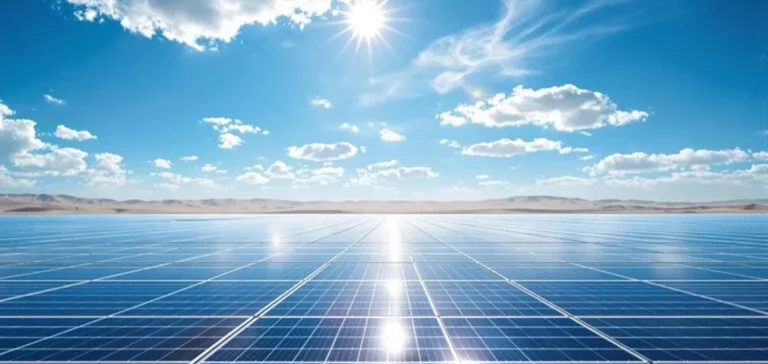The renewable energy sector in the Middle East and North Africa (MENA) region is undergoing rapid transformation, with investments estimated at USD59.9 bn by the end of 2030. This market is experiencing annual growth of 14.4%, driven by the implementation of ambitious national strategies and the diversification of energy sources. The determination to reduce dependence on fossil fuels and align with new international standards is shaping government decisions.
Major solar resources and political acceleration
The MENA region benefits from exceptional natural conditions, receiving up to 26% of the world’s solar radiation. Each square kilometre of desert holds the capacity to generate the energy equivalent of one to two million barrels of oil per year. Saudi Arabia and Morocco are among the leading countries exploiting this potential, encouraging the growth of large-scale solar and wind projects. Political support takes the form of regulatory reforms, investment incentives, and the emergence of partnerships between public and private sectors.
Rising demand and new avenues for industrial development
Population growth and industrial development are strengthening regional energy demand. Renewable energies are emerging as the preferred solution to support the electrification of new sectors and modernisation of infrastructure. Governments are focusing on green hydrogen and ammonia to develop an export-oriented industry while integrating these solutions into domestic electricity generation and mobility.
Among the flagship initiatives, the Mohammed bin Rashid Al Maktoum Solar Park in Dubai holds the status of the world’s largest concentrated solar power plant, with a capacity of 1 GW. This project illustrates the region’s intention to multiply high-capacity sites, combining thermodynamic and photovoltaic solar technologies, capable of providing electricity even at night.
Egypt leads the regional energy transition
Egypt is set to become the leading renewable energy market in the region, with an expected share of USD19.8 bn by 2030. The country combines natural advantages, such as high solar irradiation, with an active political strategy for diversifying its energy mix. The Benban solar power plant, located in Aswan with a total capacity of 1.8 GW, is one of the largest solar clusters in the world and attracts significant international investment, strengthening cooperation between public and private stakeholders.
Emerging companies such as Yellow Door Energy, Enerwhere, Nour Energy, Pylon, and Barq EV are supporting market evolution, contributing to technological growth and regional competitiveness. The development of industrial projects focused on decarbonised energy production is now shaping the sector and creating new economic perspectives for the entire region.






















